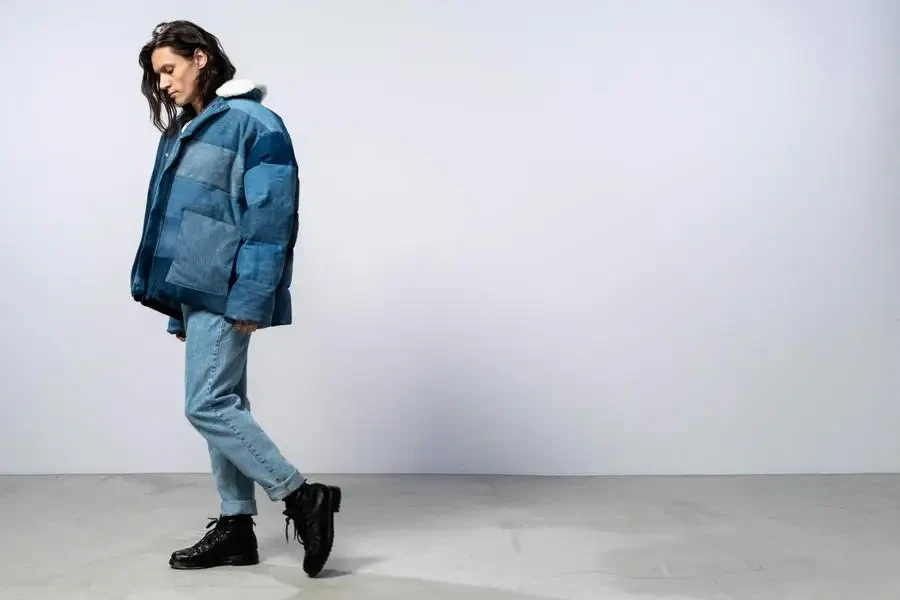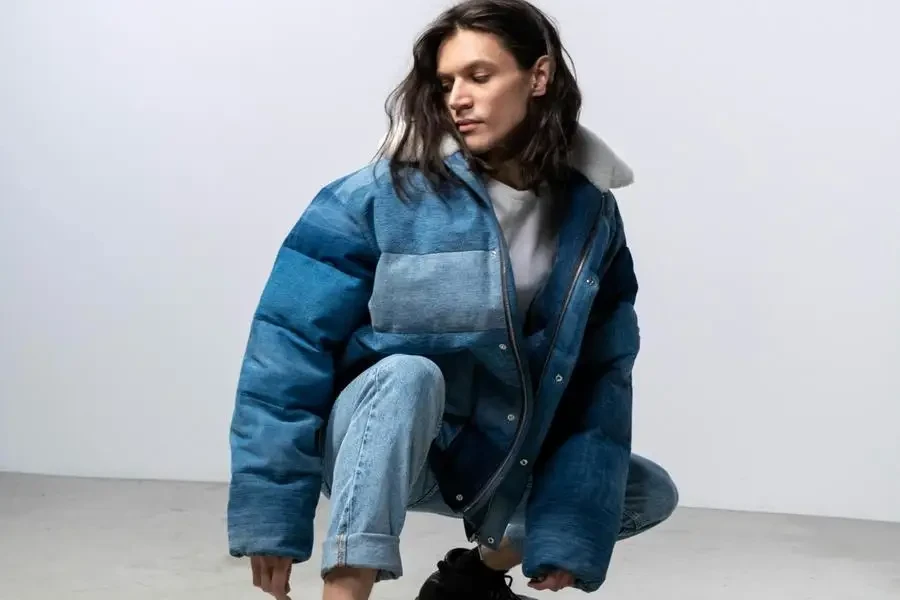The right down jacket can make all the difference: whether you’re a runner, a climber, a skier, or just commuting through winter, a down jacket is a crucial piece of winter attire. This guide will help you understand everything there is to know about down jackets for men, from the latest technical features to the essential everyday care tips.
Table of Contents:
1. Understanding down insulation
2. Key features to look for in a down jacket
3. Style and fit considerations
4. Care and maintenance tips
5. Making the most of your down jacket
Understanding down insulation

A down jacket’s insulation – the whole point of the jacket – is what keeps you warm and provides a jacket with its performance. Down insulation is constructed from the soft feathers of ducks or geese. Down feathers are a cluster of the fuzzier feathers scattered around the edge of the body, and are not to be confused with flight feathers placed along the goose’s wing or tail. The reason down is so warm is because it is structured hierarchically, meaning it is constructed of air pockets. You can think of down as a cluster of air pockets – what makes it so warm is that it has ordered pockets of air trapped inside of a cluster of down feathers. This is why down jackets are some of the most effective at trapping your body heat.
Nature of down insulation: Down insulation materials are divided into two groups: natural and synthetic. The natural type is popular due to its lightweight warmth and its compressibility. Unfortunately, it loses its insulation properties if it gets wet. On the contrary, the synthetic type was designed to imitate natural down for its lightweight warmth. In this way, it is said to retain its insulation properties even when it is moist. Since you would expect to come across wetness in some conditions, you could select the synthetic type of down insulation.
Fill power: Fill power is an extremely important indicator of down quality. It basically refers to how fluffy the down cluster is, and the higher the fill power, the loftier the down cluster. Since the loft or fluffiness of down determines its insulation performance, a higher fill power number means it can provide more insulation with a lighter weight. Even 150g of goose down with a fill power of 800+ is a better insulator than 150g of goose down with a fill power of 600. That means that the higher the fill power, the less weight that’s needed to achieve a similar insulation performance (which is why it’s typically used in high-end outdoor gear). Lower fill power goose down can still keep you plenty warm (like a fill power of 500-600) and is typically more affordable, but when you can, it’s always better to spend a little more for a down jacket with a higher fill power for greater performance.
Environmental impact: You might want to think about the source and environmental impact of the down. RDS certification guarantees that the down is sourced ethically, which means that the animals from which it came were humanely treated.
Key features to look for in a down jacket

Whether you’re buying a down jacket for the first time or are looking to add one to your collection, knowing what qualities to look out for can help make your purchase more worthwhile. Here are some key features that can make a down jacket function better and be more comfortable while you’re wearing it.
Outer shell materials: An outer shell plays a vital role in weather resistance and durability of a down jacket. Look for jackets with a water-resistant or waterproof shell to stay dry in a light rain or snow. Ripstop nylon or polyester are great options due to their durability and rip resistant properties.
Construction and baffles: The way a down jacket is constructed will have an effect on its warmth and its performance. Sewn-through construction is the most common and the most cost-effective. However, sewn-through jackets often have cold spots where the seams are. Box-baffled construction is more expensive, because it creates separate down chambers without cold spots, which will deliver more even warmth.
Extra features: Look for adjustable hoods, cuffs and hems to seal out cold air and prevent heat loss; pockets with a fleece lining for your hands; and internal pockets to stash and secure important items. Packable jackets are also handy, compressing down to a very small size.
Style and fit considerations

It may be a functional garment, but fit and style are also important; a jacket that fits well should look good, and it’ll function better too because a good fit will help to keep in more heat.
Fits: Down jackets come in a variety of fits: slim, regular and relaxed. Slim fits are slimmer and more tailored, good for wearing under a shell jacket. The regular fits are the medium choice, suitable for most activities and for most body types. Relaxed fits are looser than regular ones, which is good since it allows to have more layers underneath, especially when it’s really cold outside.
Length: The longer a down jacket, the greater the warmth, but also the less flexibility, so it’s a trade-off. The most versatile down jackets are hip length. But, to increase warmth, especially in blustery conditions and when you want to avoid extra effort, a parka-length down jacket is the way to go. These go down below the hip. They’re the best for very cold climates or when you’re not being very active.
Colour: Many times the choice of colour comes down to individual preference, but do also consider visibility and dirt concealment. Dark colours such as black, navy or grey are ideal for concealing dirt and stains, and are the most practical for everyday use. Brighter colours or reflective elements can also increase visibility and improve safety in low-light conditions.
Care and maintenance tips

Good care and maintenance will go a long way toward extending the lifespan of your down jacket, and ensuring it continues to perform well. Here are some tips.
Washing your jacket: Down jackets need special consideration when cleaning. Please check the manufacturer’s instructions, but a generally accepted approach is to use a front-loading washing machine with delicate detergent made for down, no fabric softener and no bleach. You have to be sure to rinse very thoroughly to remove all detergent residues.
Drying tips: Restore the down’s loft by drying on low heat in a tumble dryer (add clean tennis balls or dryer balls to help break up lumps and fluff the jacket) and check in a couple of hours to see if it’s dry. Repeat if necessary, but make sure the down is 100 per cent dry or it will mildew.
Storage hint: Stuff your puff into a cool, dry place. Do not compress it for too long – that will flatten the down insulation. Hang it up and air it out, or stash it in a loose, breathable sac to keep it lofty and working.
Making the most of your down jacket

If you’re going to invest in one piece of expensive outdoor clothing this winter, make it a high-quality down jacket. Here’s how you can ensure that it will keep you warm for years to come.
Layering plan: A down jacket works well as an interior layer in very cold situations, or as an outer layer in mild situations. Weather-resistant outer layers go on top. Wool and synthetic base layers underneath.
Activity-specific: Think about what you’ll be doing while wearing your down jacket. If you’re going to be engaged in particularly high intensity activities – say, hiking or skiing – you’ll want a jacket with ventilation options to deal with sweat and temperature regulation. If you’re just hanging out, comfort and cut might be the most important things to consider.
Sustainable practices: To reduce your footprint, choose recycled jackets or ones with certifications such as the Responsible Down Standard. Patching small holes or repairing worn patches extends the life of your jacket, reducing landfill waste.
Conclusion
It’s as simple as figuring out the types of insulation used in down jackets, what key features you should look for, what style and fit might work best for you, and how to take proper care of your new jacket so that it will keep you warm for many winters to come. Stay informed. Stay warm. And stay cold.




